|
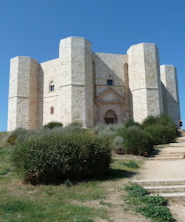 Dwight Peck's personal website Dwight Peck's personal website
The heel of the boot
Southern Italy on the trail of Stupor Mundi
It's mid-October 2011 and we've got some time off. We're all great fans of Frederick II, the Hohenstaufen Holy Roman Emperor and King of Sicily, so now's our chance.
You may not find this terribly rewarding unless you're included here, so this is a good time for casual and random browsers to turn back before they get too caught up in the sweep and majesty of the proceedings and can't let go.
Castel del Monte, Barletta, Trani, Giovinazzo

Some serious sightseeing in the hired car -- westward up the boot from the Masseria Pilapalucci near Toritto, past all the masserie in the back country, through Ruvo di Puglia, and towards the gleaming hilltop obstruction in the distance. Here we are.

The Castel del Monte is an iconic profile, many people's favorite gleaming hilltop medieval artifact. Built by Stupor Mundi, the HRE Frederick II, in around 1240, it overlooks the countryside in every direction and up and down the Adriatic coastline and crowns the emperor's castle-building frenzy in the province of Apulia.

Kristin charging the castle. Castel del Monte is perfectly octagonal, eight symmetrical towers with two floors of eight largish rooms round a courtyard. And that's it. No moat, no drawbridge, not very much in the way of defensive technology of the time -- no one is really sure that it was ever meant as a defensive fortress at all. A hunting lodge? A party venue? A quiet, private getaway? An astrological calculating device?!? Some of Sir Stupor's work orders survive, but there's no good evidence, apparently, that he himself ever used the place.

Emperor Frederick's illegitimate son by Bianca Lancia, the remarkable young Manfred, was here, the King of Sicily from 1258 to 1266, who chopped up a papal army with the help of his Saracen friends just west of here in Foggia in 1254. Charles of Anjou, the first of the Angevin rulers of southern Italy and Sicily, out-brutalized Manfred in 1266 and locked his wee little sons up here -- all Manfred's potential successors by his wife Helena of Epirus (d.1271) -- and used the place as a political prison for some years.

It really must have been a party palace in its time, but the interior marble and fancy decorations were ripped off by the Bourbons in the 18th century to pretty up their own palaces. Castel del Monte has been a World Heritage cultural property since 1996: "In its formal perfection and its harmonious blending of cultural elements from northern Europe, the Muslim world, and classical antiquity, Castel del Monte is a unique masterpiece of medieval military architecture, reflecting the humanism of its founder, Frederick II of Hohenstaufen."

The beautiful front door is the only real entrance to the place (there's a tiny service door round the back). The World Heritage description continues: "Castel del Monte is of special interest because of the absence of features that are common to the overwhelming majority of military monuments of this period (outer bailey, moat, stables, kitchen, storerooms, chapel), the mathematical and astronomical rigour of its plan and form, and the eclecticism of its cultural elements, deriving from antiquity, the Cistercian tradition of northern Europe, and the Ummayyad 'desert castles' and fortified monasteries in the Near East and North Africa."
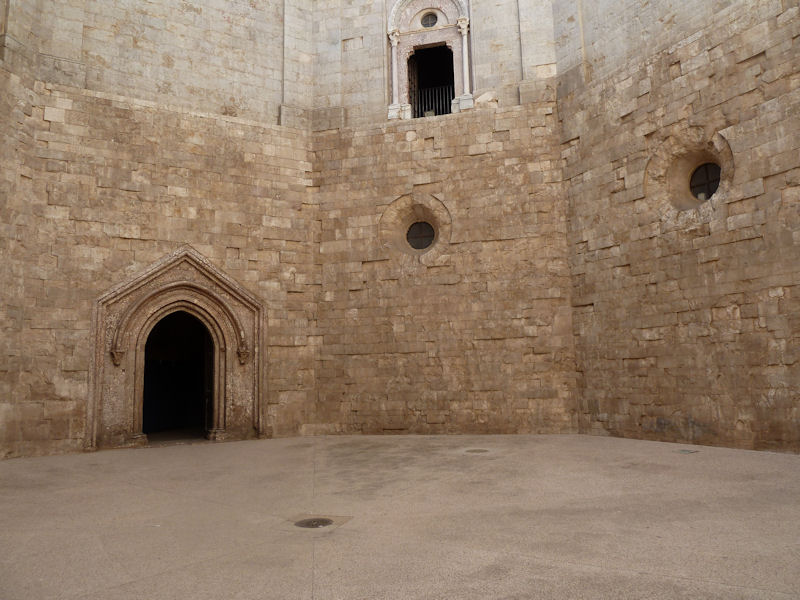
The courtyard (smaller than you'd expect from the outside)

The courtyard and open sky. Historians and tour guide authors don't fail to point out hundreds of suggestive features of the architecture which all point to -- astrology. Or something. Numerical relationships! Symbols! Otherwise useless features! And Frederick II was known as a furious scholar of wisdom of all sorts.

Castle interiors

German tour groups

Second story party rooms. During the plague of 1656, the rich people of nearby Andria came up here to wait it out. Like the Masque of the Red Death.
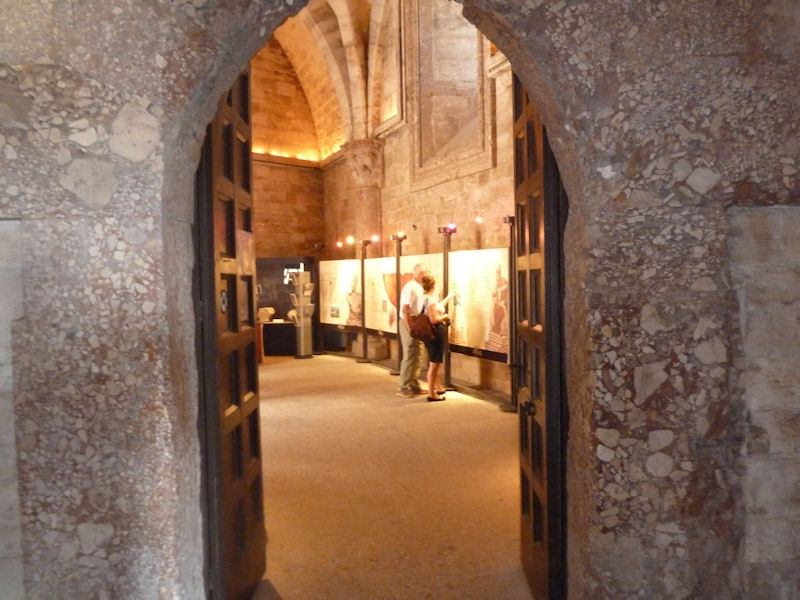
Rob and Elke trying to memorize the Hohenstaufen genealogies

The cities on the coast

Back to the hired car, and on to our next stop. Which is . . .
Barletta

Due north of Castel del Monte, past Andria and squatting on the coast, Barletta was welcoming sightseers like us in the 4th century B.C., when the Phoenicians planted a trading post here on top of an existing Apulian settlement.
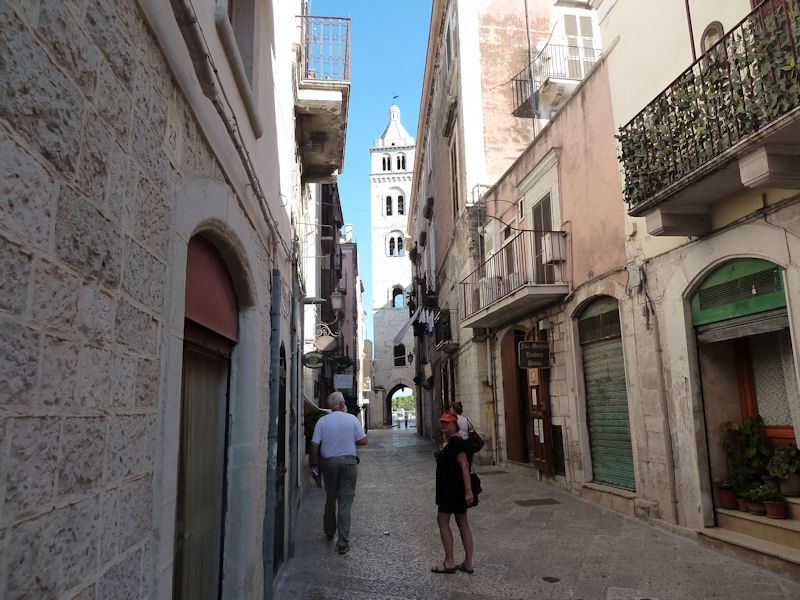
Even Phoenicians, and later, Greeks and Romans (and, briefly, Carthaginians), and Saracens and Normans, when it was mid-day, needed a pizzeria.

Narrow streets. VERY narrow doors. Self-Service.
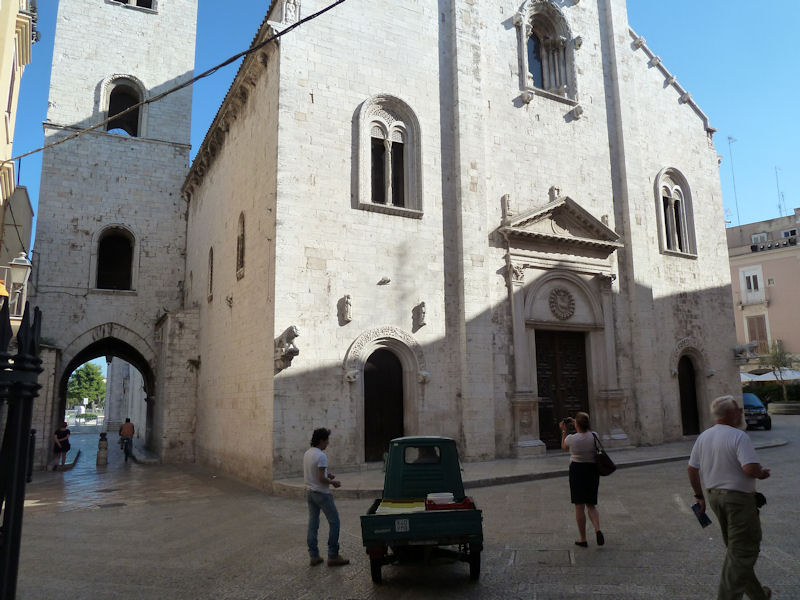
The cathedral of Barletta, Santa Maria Maggiore, consecrated in 1267 in the Romanesque style, and in the Gothic style a century later
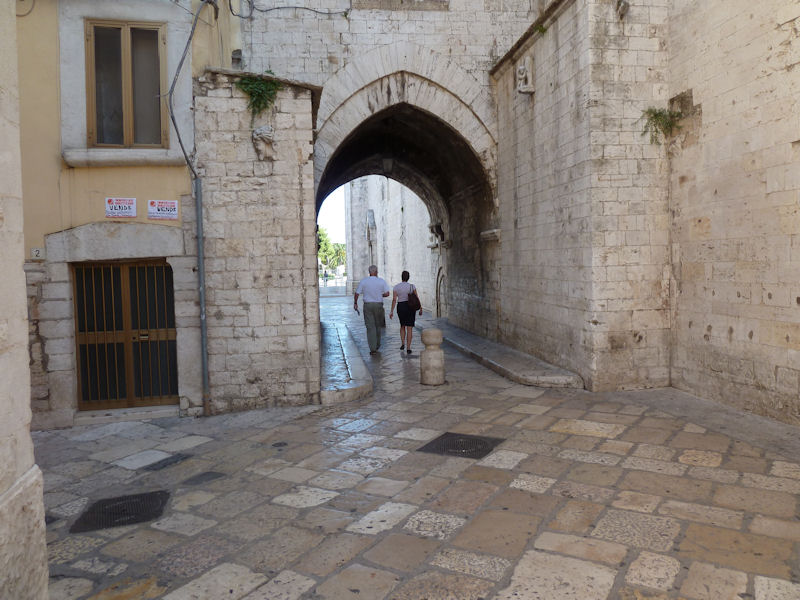
Rob and Elke on the way to the castle, in case someone's got a pizzeria over there. Barletta, thanks to the pesky Saracen raiders, was virtually abandoned for years, but revivified itself during the Crusader era as the bored and unruly Knights paced along the jetties waiting for transport to the "Holy Land", to kick some Infidel Butt.

The castle of Barletta, originally a Norman motte-and-bailey from the 11th century, in its Crusader heyday, was later upgraded by Frederick II (Stupor Mundi!) in the 1220s, prepping for his own Sixth Crusade in 1228.

The back of the cathedral, seen from the castle

The Angevins continued reinforcing the castle, and so did the Aragonese during their turn at running the region.
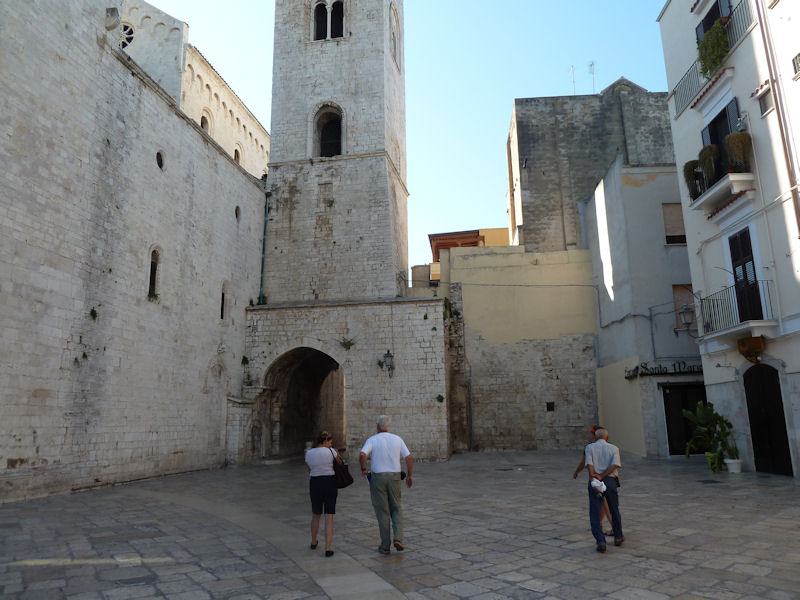
No pizza over this way, but perhaps through the arch

No pizzerias up there

No pizzerias up there either

Ah. Just in time. The Brewer's Pizzeria.

Gelato after pizza

Ice cream cone firmly in hand, and bound for . . .
Trani
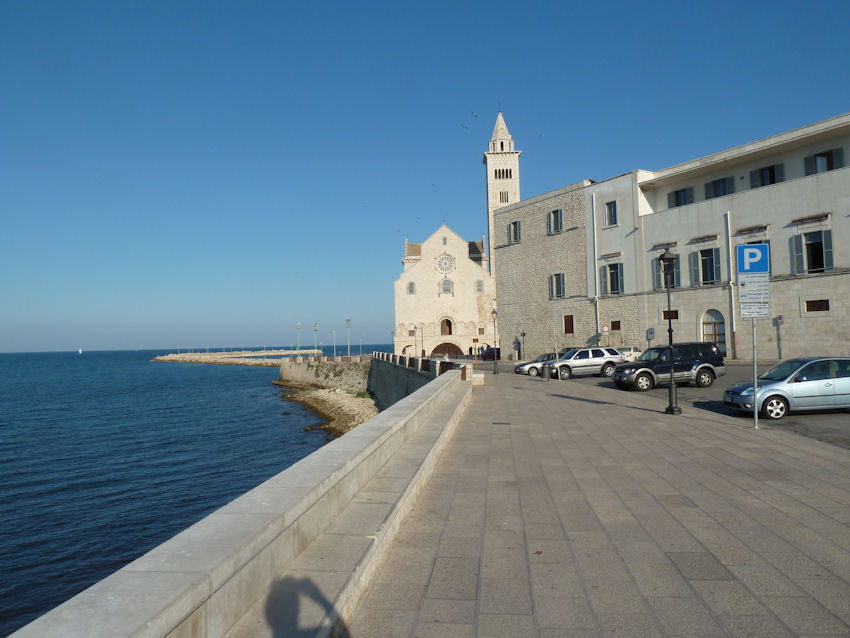
Just down the coast a ways, we're in Trani. Trani was well established as a commercial port by the 11th century, when families from all the great Italian trading cities like Amalfi, Venice, Pisa, Ragusa, and Genoa moved in to get closer to the action, but when the Crusaders began taking off from here to deliver a stern reprimand to the Muslim occupiers of the "Holy Land", the coins were jingling in everybody's pockets.

Now we'll guess at who built Trani Castle in 1233. Correct. Stupor Mundi!
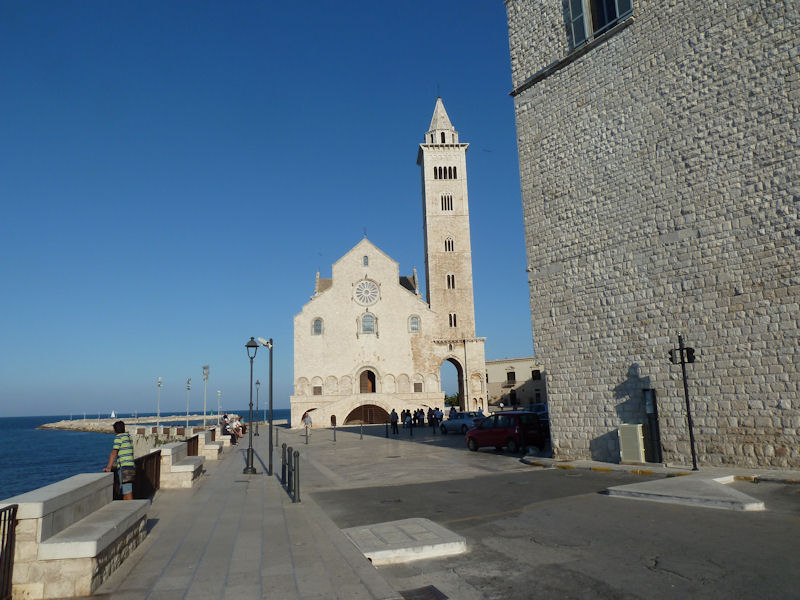
The cathedral of Trani, dedicated to St Nicholas the Pilgrim ("Pellegrino"), a Greek chap who died here on his way to the "Holy Land" in 1094.

We're not to worry about that flimsy sort of arch, because the tower's nailed firmly onto the wall of the church.

Elke and the Outdoor Crypt

The waterfront and Mr Mundi's castle

The fishing fleet, or some of it anyway, coming into port dragging birds along with it.
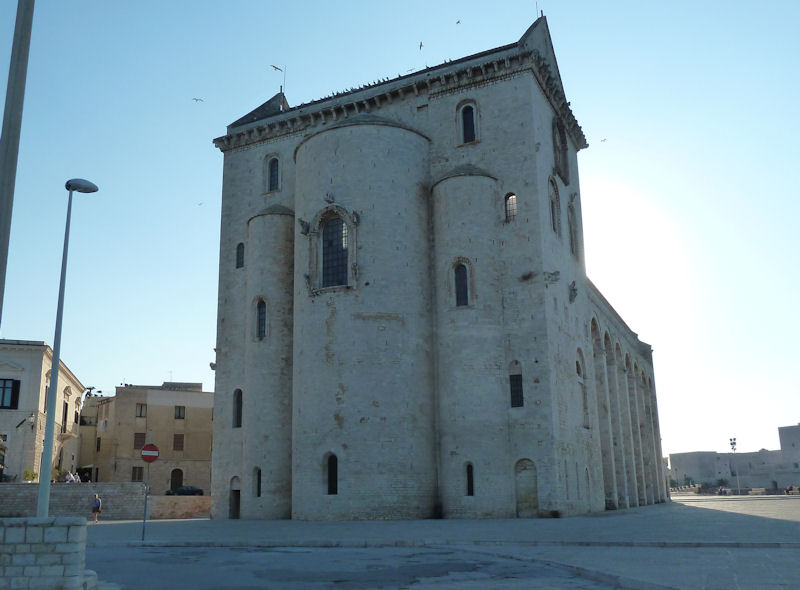
The back of the cathedral

At the side door of the cathedral, Elke, Kristin, and Rob, and an accordion player (whose wife was round by the front door dressed up as a gypsy cripple)
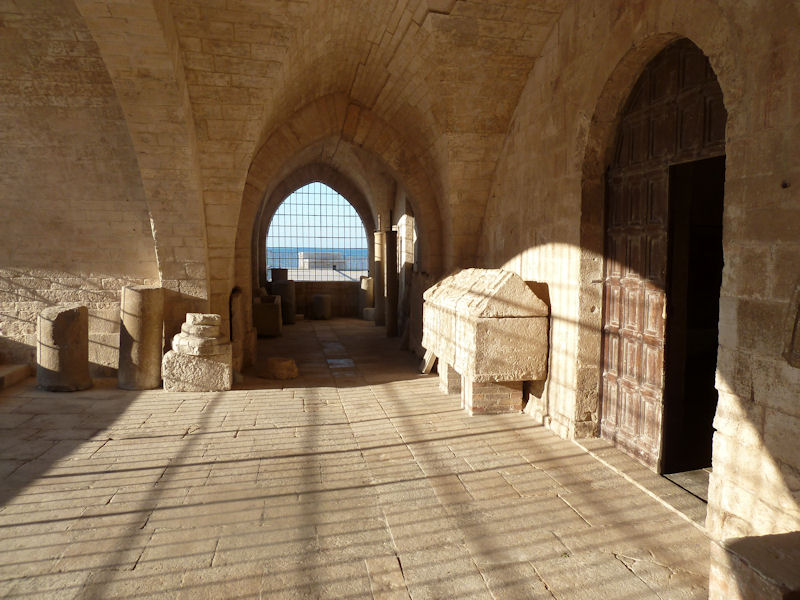
The sunlit crypt

Mournful frescoes and an enormous crypt downstairs as well

An inspiring sort of Romanesque interior

Another view

The entrance to the inner harbor
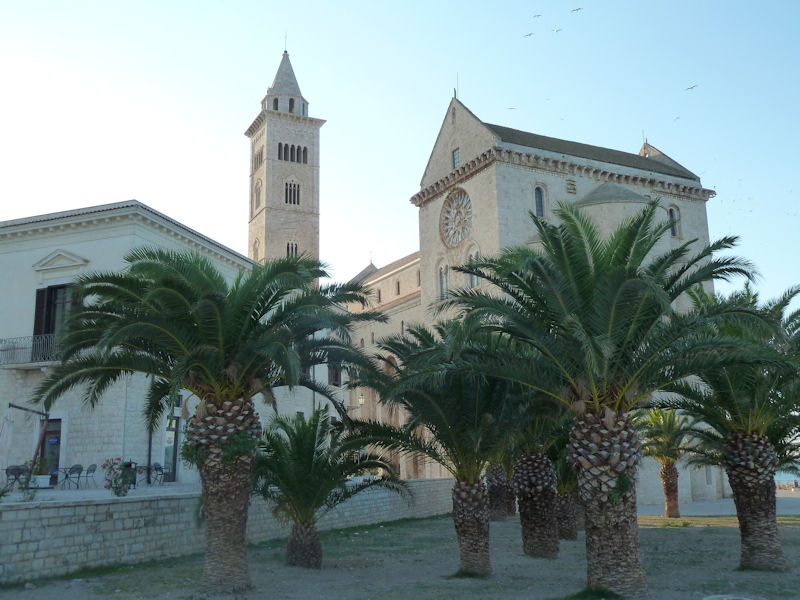
Cathedral and palm trees

Kristin and Elke hurrying along to meet the fleet as it's coming in

The fishing fleet, that is. Everyone is trying to find just the perfect fish.
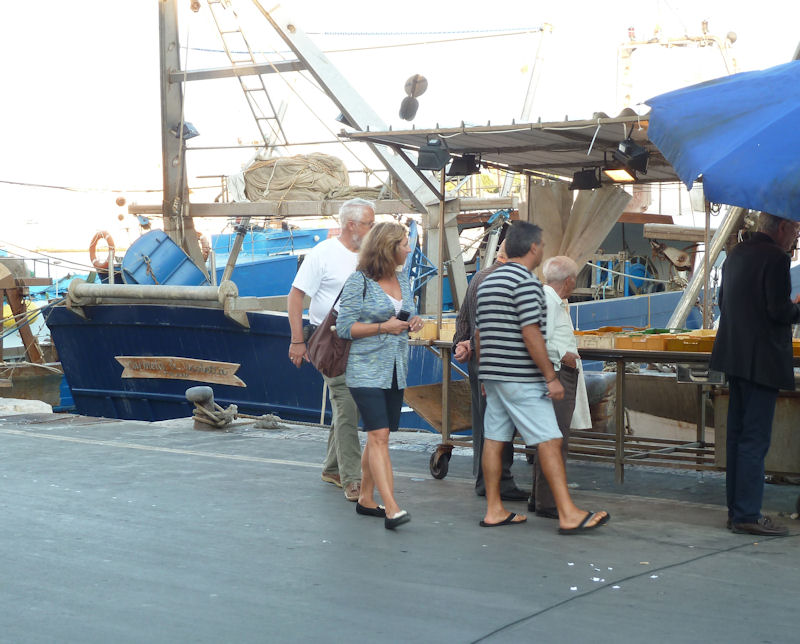
A discriminating eye for fish

The back of the old Knights Templar church and hospital of Trani, also called the Church of Ognissanti, where the valorous old brutes got themselves absolved and shrived and what not, with inspiring sermons and politico-spiritual exhortations, and then climbed on board the galleys with their horses, trunks full of weapons, armor trains, general baggage, squires, girlfriends, reading material and religious paraphrenalia, boyfriends, recreational stashes if they had any, and set off on the long, dangerous journey to the "Holy Land", confident of getting into Heaven if they did so, no matter what.

Marina in Trani port. We went round to the front of the Templar church in the lane up the hill -- renovations, fermé. Chiuso.

Afternoon light

Trani's own Castello Svevo, Frederick II's creation, his son Manfred's favorite residence (where he married Helen of Epirus in 1259, and where she and the kids were captured in 1266), much altered by the Angevins like so much else.

Like all the other castles in Europe after nobody needed castles anymore, for many years it saw good service as a prison.

The cathedral out the castle window
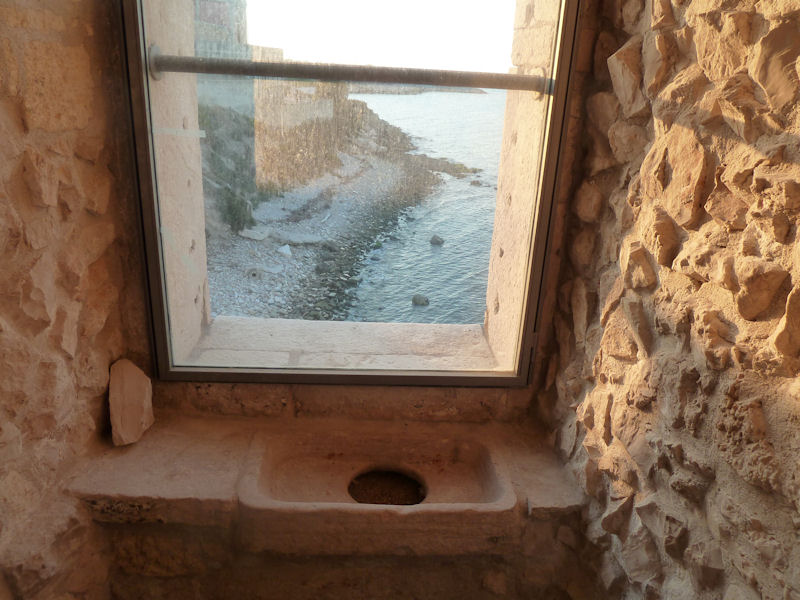
A castle room with a view

It was probably much homier back in the day.
Giovinazzo
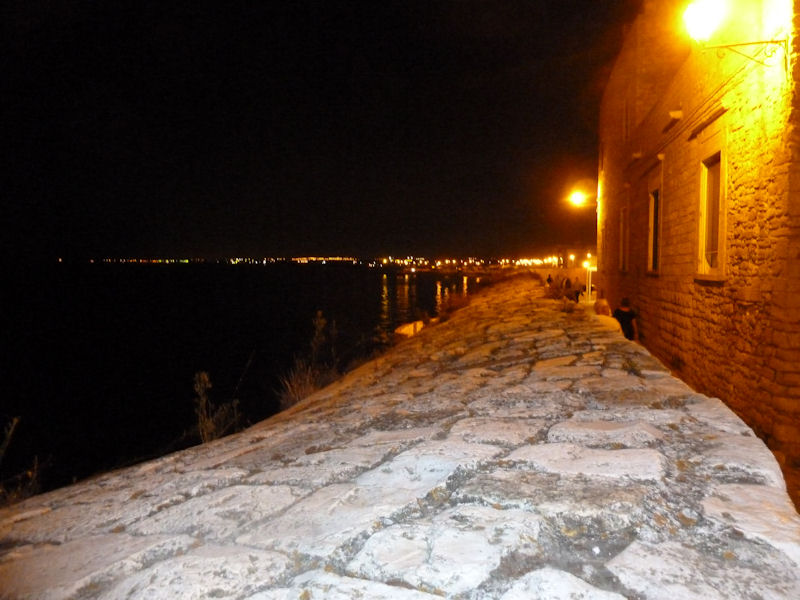
Night has fallen; we're filing along the harbor walls looking for one of the famous restaurants of Giovinazzo.
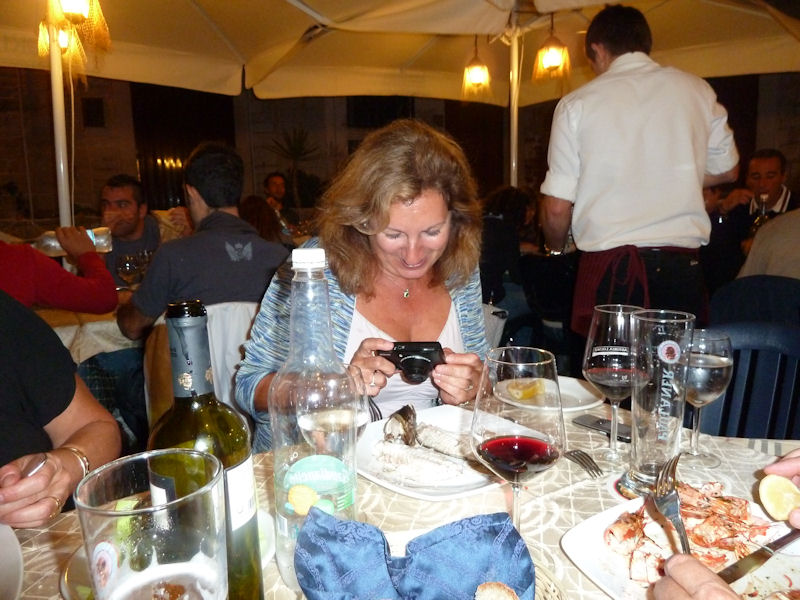
In one of the less famous restaurants of Giovinazzo, Elke is making photographic art out of a dead fish head with good dentition.

The port of Giovinazzo at night

The port of Giovinazzo, still at night
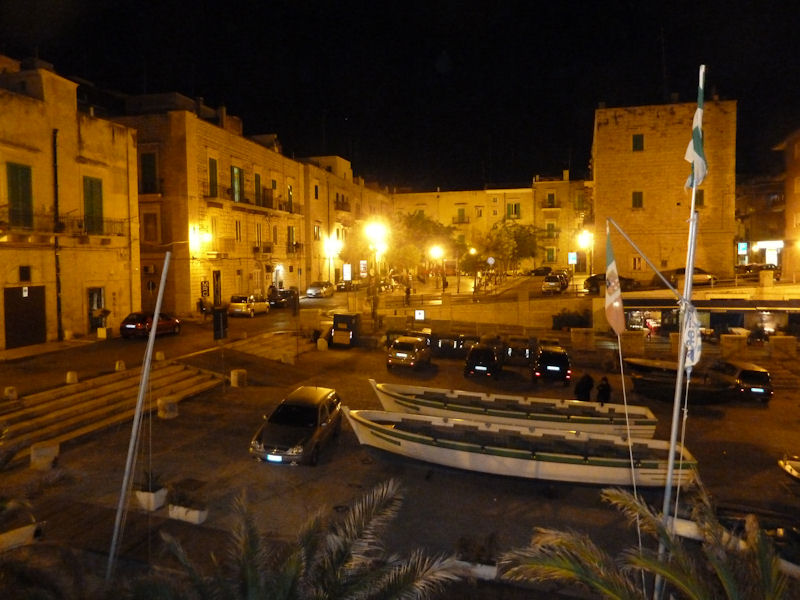
We're leaving the port of Giovinazzo at night in order to coax the hired car out onto the Bari ringroad and get horribly lost looking for the Masseria Pilapalucchi in the hinterlands.

 Feedback
and suggestions are welcome if positive, resented if negative, Feedback
and suggestions are welcome if positive, resented if negative,  .
All rights reserved, all wrongs avenged. Posted 16 November 2011. .
All rights reserved, all wrongs avenged. Posted 16 November 2011.
|
 Dwight Peck's personal website
Dwight Peck's personal website

































































